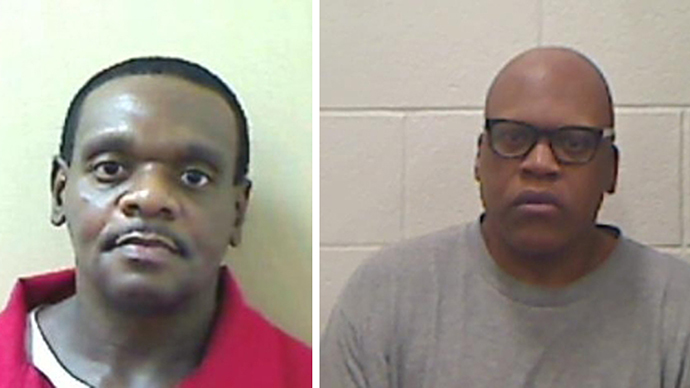DNA clears N. Carolina’s longest-serving death row inmate & his half-brother

North Carolina on Wednesday released an inmate who has served three decades on death row – a day after declaring he and his half-brother were innocent in the 1983 rape and murder of an 11-year-old girl.
Superior Court Judge Douglas Sasser overturned the convictions of Henry McCollum, 50, who was on death row and Leon Brown, 46, who was serving a life sentence. Both were convicted of raping and murdering 11-year-old Sabrina Buie.
However, a recent investigation by the North Carolina Innocence Inquiry Commission (NCIIC) found no DNA evidence at the crime scene that could be traced back to McCollum or Brown.
Instead, as Sasser noted, the DNA of another man was found on a cigarette butt left near the body of the dead girl, saying the new evidence ‒ tested in 2010 ‒ contradicted the case put forth by prosecutors. The DNA matched that of Roscoe Artis, a convicted sex offender who lived a block away from the soybean field where Buie was found. Artis is serving a life sentence for another murder and rape that occurred just weeks after Buie’s death.
Both McCollum and Brown are mentally challenged, having low IQs, according to their lawyers. The men, 19 and 15 at the time, respectively, confessed to the crime after lengthy police interrogations, believing they would be allowed to go home after signing the papers. McCollum recanted his confession 226 times, Slate reported. There was no physical evidence connecting them to the crime, and the prosecution rested largely on the confessions that their attorneys claimed were coerced.
“Police also hid exculpatory evidence for years," Slate’s Dahlia Lithwick wrote. The police department in the small town of Red Springs is accused of hiding boxes of evidence from 1984 until last month, according to the Guardian. The existence of the evidence, gathered at the crime scene, was never disclosed either to the defense teams or to the district attorney prosecuting the case.
Brown initially served on death row as well, but a retrial five years after the original conviction dismissed his murder charge, Time reported.
Robeson County District Attorney Johnson Britt said Wednesday he is now considering whether to reopen the case and charge the other man with Buie's killing. The NCIIC’s associate director, Sharon Stellato, conducted three interviews with the 74-year-old Artis, in which he repeatedly told her that McCollum and Brown were innocent, the Associated Press reported. The inmate denied involvement in Buie’s killing, but changed his story about knowing the girl and interacting with her the night of her death.
"I knew one day I was going to be blessed to get out of prison, I just didn't know when that time was going to be," McCollum said after he was released from the Central Prison in Raleigh. "I just thank God that I am out of this place. There's not anger in my heart. I forgive those people and stuff. But I don't like what they done to me and my brother because they took 30 years away from me for no reason. But I don't hate them. I don't hate them one bit."
His half brother was released later in the day from Maury Correctional Institution near Greenville.
“[Brown] always said, ‘They can go to the North Pole, and they’re not going to find anything’,” Ann Kirby, one of Brown’s lawyers, said, according to Time. “When we heard the verdict, we said, ‘They went to the North Pole’. And he said, ‘They sure did’.”
McCollum’s case has even been used in an unrelated Supreme Court opinion by Justice Antonin Scalia as an example of someone who deserved to die.
"For example, the case of an 11-year-old girl raped by four men and then killed by stuffing her panties down her throat," Scalia wrote in Callins v. Collins in 1994. "How enviable a quiet death by lethal injection compared with that!"
The opinion, a response to a dissent by then-Justice Harry Blackmun, led to a back-and-forth between the two men on the nation’s highest court, the Huffington Post reported. Scalia has long defended the death penalty.
During his nearly 30 years on death row, McCollum watched 42 men he describes as brothers make their last walk to the nearby death chamber to receive lethal injections. If not for a series of lawsuits that has blocked any executions in North Carolina since 2006, McCollum would have likely been put to death years ago.
"Henry watched dozens of people be hauled away for execution. He would become so distraught he had to be put in isolation,” Ken Rose, a lawyer who represents McCollum, said in a statement. “It's impossible to put into words what these men have been through and how much they have lost."













